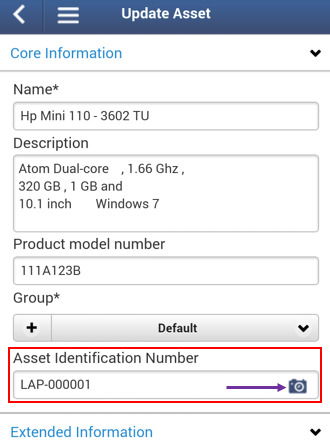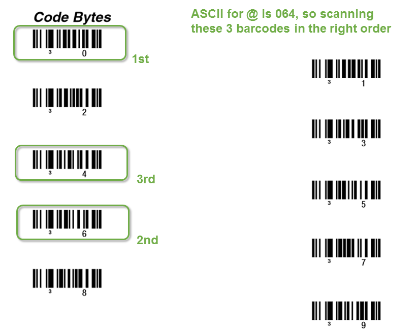EZOfficeInventory enables you to effectively manage items by streamlining your check-in and checkout workflows. In this post, we’ll take you through using EZOfficeInventory to set up a Barcode scanner on your PC or Mac. To learn how to set up a Barcode scanner on the EZOfficeInventory mobile app, click here.
EZOfficeInventory gives you a lot of options to speed up checkouts and reservations. These include:
- Selecting a few item checkboxes from the asset list and choosing the Checkout option from the Actions dropdown.
- Using EZOfficeInventory’s mobile app to bulk scan labels and take actions.
- Using the Cart to add items and check them out in one go. The Cart should be enabled from Company Settings → Add Ons → Cart Module.
1. Using Barcode Scanners with Carts
To make checkouts and reservations for multiple items even quicker, you can plug in a Barcode scanner with your PC or Mac. This allows you to add items to a cart by scanning them in. Before we begin, make sure to enable handheld scanners from Settings icon on the top navigation bar. Follow the pathway: Add Ons → Handheld Scanner Integration → Barcode Reader → Enabled.

2. Setting Up Barcodes for Items
A Barcode is simply a sequence of alphabets, numbers, and dashes – for example, ABC-123aa-9878. No two items can have the same Identification Number, because it has to uniquely point to a specific item. Let’s play out a few scenarios showing you how to populate Barcodes into your EZOfficeInventory account.
A) You already have Barcodes on your items: The existing barcode sequence needs to be added to the Identification Number field of the item. Say a Laptop (denoted as Asset #13 in your account) has the Barcode LAP-000001. You’ll add LAP-000001 in the Identification Number field for Asset #13. This can be done by clicking the ‘Edit’ button.

These Identification Numbers can also be imported via Excel. Alternatively, you can scan them in using our mobile app. When editing or adding an item in the app, simply tap the camera icon next to the Identification Number field:The mobile or iPad camera scanner will come up, allowing you to scan the Barcode you want to associate with this item. Once you’ve scanned the Barcode, save the item details and you’re done!
B) You have to create Barcodes for your items: If you want to create Barcodes afresh, add a unique sequence of numbers in the Identification Number fields of items. Next, create a Print Label template for your Barcodes. Here are more details on label designing and printing.
Tip: Smaller barcode sequences get scanned quicker.
3. Choosing the Right Barcode Scanner
Any Barcode scanner that connects to a computer via USB, Bluetooth, etc., can be used with EZOfficeInventory. Three important things to look for when choosing the scanner are as follows:
- The scanner should be able to connect to a PC or Mac, and be HID (Human Interface Device) compliant.
- The scanner should be configurable and allow an @ prefix and an @ suffix. This is because the barcode ABC-1234 will be scanned as @ABC-1234@.

- EZOfficeInventory uses Code 39 for Barcode encoding, although our mobile apps support scanning multiple formats. If you’re using Barcodes generated via the EZOfficeInventory Label Designer, the Barcode scanner should support Code 39 Barcodes.
Note: Code 39 Barcode encoding allows the use of digits and characters up to 39 characters.
4. Setting up the Barcode Scanner
Let’s use the Honeywell VoyagerCG 9540 Barcode Scanner in this example. You’ll have to consult the relevant Configuration Guide to add an @ sign as a suffix and prefix to your specific Barcode scanner. We’ve outlined the steps for the Honeywell scanner below:







1) Scan the Enter/Exit Programming barcode. The scanner will now be in programming mode.2) Scan the Configurable Prefix #1 barcode. Now the scanner will expect the prefix (in our case, @) to be scanned.3) From the ASCII conversion chart, you’ll see that the @ character is 064.
4) From the Code Bytes, scan 0, then 6, and then 4 (highlighted as 1st, 2nd and 3rd in the image below). Now @ is configured as the prefix, and will be added to the start of every Barcode that is scanned.5) Next, scan the Configurable Suffix #1 barcode. Now the scanner will expect the suffix (in our case, @) to be scanned.6) From the Code Bytes again, scan 0, then 6, and then 4 (highlighted as 1st, 2nd and 3rd in the image below ). Now @ is configured as the suffix, and will be appended to every barcode that is scanned.7) Scan the Enter/Exit Programming Barcode again, this time to exit the programming mode.Here is the excerpt from the VoyagerCG guide we used.
5. Testing the Scanner
It’s time to test this out! To see if the scanner is configured correctly:
1) Hook up the Barcode scanner to your PC or Mac using a USB port or Bluetooth.
2) Click on the Search Bar in your app (or use any other text area).

3) Scan a Barcode, say ABC-123
4) It should print @ABC-123@ in the address bar (or text area).
Seems like everything is in order! Next, go to the Carts page and scan in your Barcodes. If items associated to them exist in the system, they’ll be populated in the Add Items field:


Scan as many labels as you like and then hit the Add button to put all of them into your cart. If you scan a Barcode that’s not in your EZOfficeInventory account, it will be shown in red:
And that’s it! You’ve learned all about scanning items in EZOfficeInventory.
Share Your Queries
Log into your account to try this out and let us know what you think at support@ezo.io.







